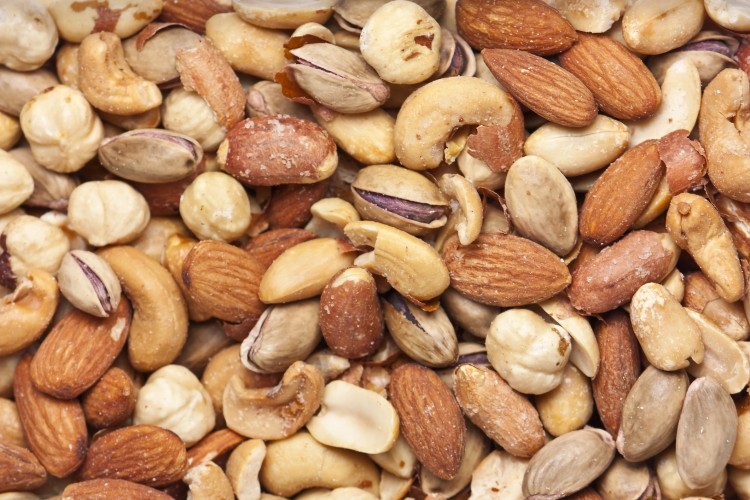Potential for nut skin to prevent pathological conditions: Review

Evaluation of the outcomes from a variety of studies on health-promoting antioxidant properties of almond, pistachio and hazelnut skins showed enough evidence to support nutraceutical or dietary applications in the “foreseeable future”, according to scientists from the University of Bahrain, the University of Ferrara (Italy) and the University of Pavia (Italy).
“Research has shown nut skins to possess high AOs owing to the high amounts of phenolic compounds present in them,” they write in ‘Almond, Hazelnut, and Pistachio Skin: An Opportunity for Nutraceuticals’, published in Nutraceuticals.
“Ultimately, the bioactive compounds in nut skins could be optimized and validated for the prevention and treatment of many pathological conditions, including mental disorders, CVDs, cancer, and diabetes.”
Bioactive benefits
Edible nuts contain optimal levels of healthy minerals, high amounts of vegetable protein and unsaturated fatty acids (UFAs), and various other bioactive compounds.
However, nut skin exhibits particularly strong AO activity thanks to polyphenolic compounds and other (non-nutrient) phytochemicals. These bioactive elements slow or inhibit lipid oxidation and eliminate free radicals and, in this way, help reduce disease pathogenesis.
All three nut species under review demonstrate beneficial bioactive properties and possess attributes favourable to a variety of dietary applications.
Almond skin is already used as a base component in wheat flour and studies suggest it has potential value for patients with intestinal inflammatory disease and for gut health in general, the authors say: “The skin is a great source of fibre that serves as a prebiotic, affecting the gut microbiome.”
Diverse applications
Hazelnuts lower cholesterol and has broad potential in preventing chronic disease such as strokes, Alzheimer’s, cancer, and atherosclerosis.
At the moment, it is mainly used by the food industry in confectionery, including chocolate, ice cream, dairy products, and coffee. However, global demand for hazelnut skin is increasing. It has broad dietary applications and particularly as a functional ingredient due to its high dietary fibre content, the authors explain.
“Furthermore, it can be added to many other products, from cereals and bread to yogurts and salads.”
One current application for pistachio skin is the production of natural polymers but it too has value in different industries and fields, although with limited potential, they say.
Inhibitory effects
In studies, pistachio skin exhibits strong antibacterial effects and lowers the variability of cancer cells, since ROS is eliminated by phenolic compounds. It also demonstrates efficacy in preventing angiogenesis.
While almond skin has lower AO, research indicates both antimicrobial and antiviral activity against Saphylococcus aureus (S. aureus) and herpes simplex virus type 1 (HSV-1). Almond skin phenols demonstrate synergistic effects with vitamins C and E that enhance AO activity.
“Pistachio and almond skin hydroalcoholic extracts have antibacterial effects and decrease the risk of liver cancer by eliminating reactive oxygen species,” they say.
On the other hand, hazelnuts are shown to prevent low-density lipoprotein (LDL) oxidation and inflammation in subjects with moderate hypercholesterolemia, thus reducing the risk of colon cancer.
In addition, polyphenolic extract in hazelnut skin inhibits in vitro formation of advance glycation end-products (AGE) that contribute to the pathogenesis of several chronic diseases, like cancer and diabetes.
The authors comment: “For this reason, natural bioactive molecules present in hazelnut skin that are able to inhibit their production could be an interesting for supporting therapeutic approaches with a positive effect on human health.”
Suitable therapy
Published articles included in the review were sourced from PubMed database and Google Scholar and written in English. The documents focused specifically on findings for skin extracts of almond, pistachio, and hazelnut species.
The review authors maintain that accumulated evidence on the beneficial compounds found in the nut skins proves their potential in disease prevention and treatment.
“Overall, hazelnut, pistachio, and almond skins are a great source of antioxidants, making them suitable for nutraceuticals’ development,” they conclude.
Source: Nutraceuticals
Published online, October 17, 2022: http://doi.org/10.3390/nutraceuticals2040023
‘Almond, Hazelnut, and Pistachio Skin: An Opportunity for Nutraceuticals’
Authors: T.A. Alalwan, et al











